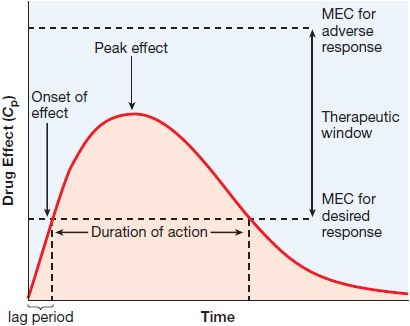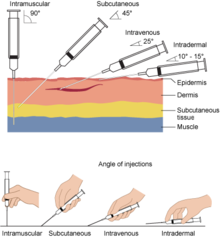Pharmacon mean ‘drug’ and logs mean ‘knowledge’. So the word Pharmacology means “the study or science of drug”. The study of substance that interact with living systems through chemical process, especially by binding to regulatory molecules and activating or inhibiting normal body process.
Drug compounding is often regulated as the process of combining, mixing ingredients to create a medication tailored to the needs of an individual patient.
Basic area of pharmacology
Pharmacokinetics: Pharmacokinetics is What “The Body Does To The Drug”. It deals with absorption, distribution, metabolism & excretion of drugs.
Pharmacodynamics: Pharmacodynamics is What “The Drug Does To The Body”. It is concerned with the effects of drugs and the mechanism of their action.
Pharmacotherapeutics: It is a branch of pharmacology which is defined as “the study of therapeutic uses and effects of drugs”.
It is also concerned with the use of drugs in prevention & treatment of diseases.
Chemotherapy: It is also called “Chemo”, is the treatment with drugs that block or slow down cell growth.
Toxicology: It is the branch of pharmacology which deals with the undesirable effects of chemicals on living systems.
Pharmacogenomics: Is the study that concerned with, how genes affect a person’s response to drug.
Application of Pharmacology
To control speed of onset, intensity of the drug’s effect, and duration of action. Hence decide the route of administration, the amount and frequency of each dose, and the dosing intervals.
Onset of action, intensity of the drug’s effect, and duration of action is very very important terms!
- Onset: The length of time it takes for a medicine to start work
- Intensity: Plasma peak concentration
- Duration of the drug action: The length of time that particular drug is effective.

To identify the possible side effect and withdrawal symptoms of drugs and take measures to manage.
To avoid adverse effects from drug interaction and contraindicated drugs.
- Adverse effect: An unexpected medical problem that happens during treatment with a drug or other therapy.
- Drug Interaction: A drug interaction occurred when the administration of one drug alters the clinical effects of another.
- Contraindication: A contraindication is a specific situation in which a drug, procedure or surgery should not be used because it may be harmful to the person.
To avoid adverse effects in special populations like geriatrics, pediatrics, pregnant and lactating mothers.
To avoid treatment failure due to tolerance & resistance.
- Drug Tolerance: Drug tolerance simply means that a person’s reaction to a drug decreases as they continue to use it.
- Drug resistance: When bacteria, virus or other microorganism mutates (change form) and becomes insensitive to a drug that was previously effective.
To control misuse of drugs by the patient & health professionals.
Drug
Any substance or product that is used or intended to be used, to modify or explore physiological system or pathological states, for the benefit of the benefit of the recipient is called drug. Drugs mostly interact with a specific molecule in a biologic system that plays a regulatory role.
Example: Paracetamol (acetaminophen) is a pain reliever and a fever reducer.
Source of Drugs
Drugs are obtained from various sources. Drugs may be synthesized within the body (hormones) or not.
According to sources they are:
- Natural drugs
- Synthetic drugs
- Semi-synthetic drugs
- Biosynthetic drugs
Let’s discuss about these broadly.
1. Natural drugs
Substances derived from natural sources such as plants, animals, microorganisms, or minerals, which are used for medicinal purposes are referred to natural drugs
- Plants
For Example;
- Digoxin from Digitalis purpurea
- Atropine from Atropa belladonna
- Quinine from Cinchona officinalis
- Animals
For Example;
- Insulin from beef
- Cod liver oil from Cod fish liver.
- Minerals
For Example;
- Iron
- Iodine,
- Potassium salts
- Micro-organisms:
For Example;
- Penicillin from penicillium notatum,
- Chloramphenicol from Streptomyces venezuelae
2. Synthetic drugs
Prepared by chemical synthesis in pharmaceutical laboratories.
For Example;
- Sulphonamides,
- Quinolones,
- Barbiturates
3. Semi-synthetic drugs
Prepared by chemical modification of natural drugs.
For Example;
- Ampicillin from penicillin G.
- Dihydroergotamine from ergotamine.
4. Biosynthetic drugs
Prepared by cloning of human DNA in to the bacteria like E.coli.
For Example;
- Human insulin (humulin),
- Human GH.
Drug Nomenclature
A drug has at least three types of names:
- Chemical name (IUPAC) or scientific name
- Based on molecular structure of the drug
- Very long, too complex to use in common practice.
Example: N-acetyl-para-aminophenol.
- International Nonproprietary/generic name
- Given by FDA/WHO while approved, the short hand version of chemical name.
- Recommended in RX.
Example: Paracetamol.
- Proprietary/trademark/Brand name
– Given by the pharmaceutical company.
– Costly.
Example: Napa.
Dosage form
Dosage forms are the means by which drug molecules are delivered to sites of action within the body.
Types of dosage forms;
According to route of administration there are several types of dosage form:
- Oral
- Rectal
- Vaginal
- Parenteral
- Inhaled
- Topical (skin)
- Ophthalmic (eyes)
- Optic (ear)
According to physical form of a drug:
- Solid-
Tablets: Conventional, Chewable, Sublingual, Extended release.
Capsules: Hard gelatin & Soft gelatin.
Powders: Insufflations, Effervescent granules, Powder for injections.
- Liquid: Solutions, Suspensions, Emulsions.
- Semisolids: Suppositories, Ointments, Creams, Pastes, Jellies, Pessaries.
- Gases (pressurized): Aerosols.
According to onset of action, slow absorption:
- Orally (swallowed)
- Through Mucus Membranes
- Oral Mucosa (e.g. sublingual)
- Nasal Mucosa (e.g. insufflated)
- Oral Mucosa (e.g. sublingual)
- Topical/Transdermal (through skin)
- Rectally (suppository)
According to onset of action, faster absorption:
- Parenterally (injection):
- Intravenous (IV)
Angle: 25 degree
- Intramuscular (IM)
Angle: 90 degree
- Subcutaneous (SC)
Angle: 45 degree
- Intradermal (ID)
Angle: 15 degree
- Intraperitoneal (IP)
Angle: 30-40 degree

- Inhaled (through lungs)